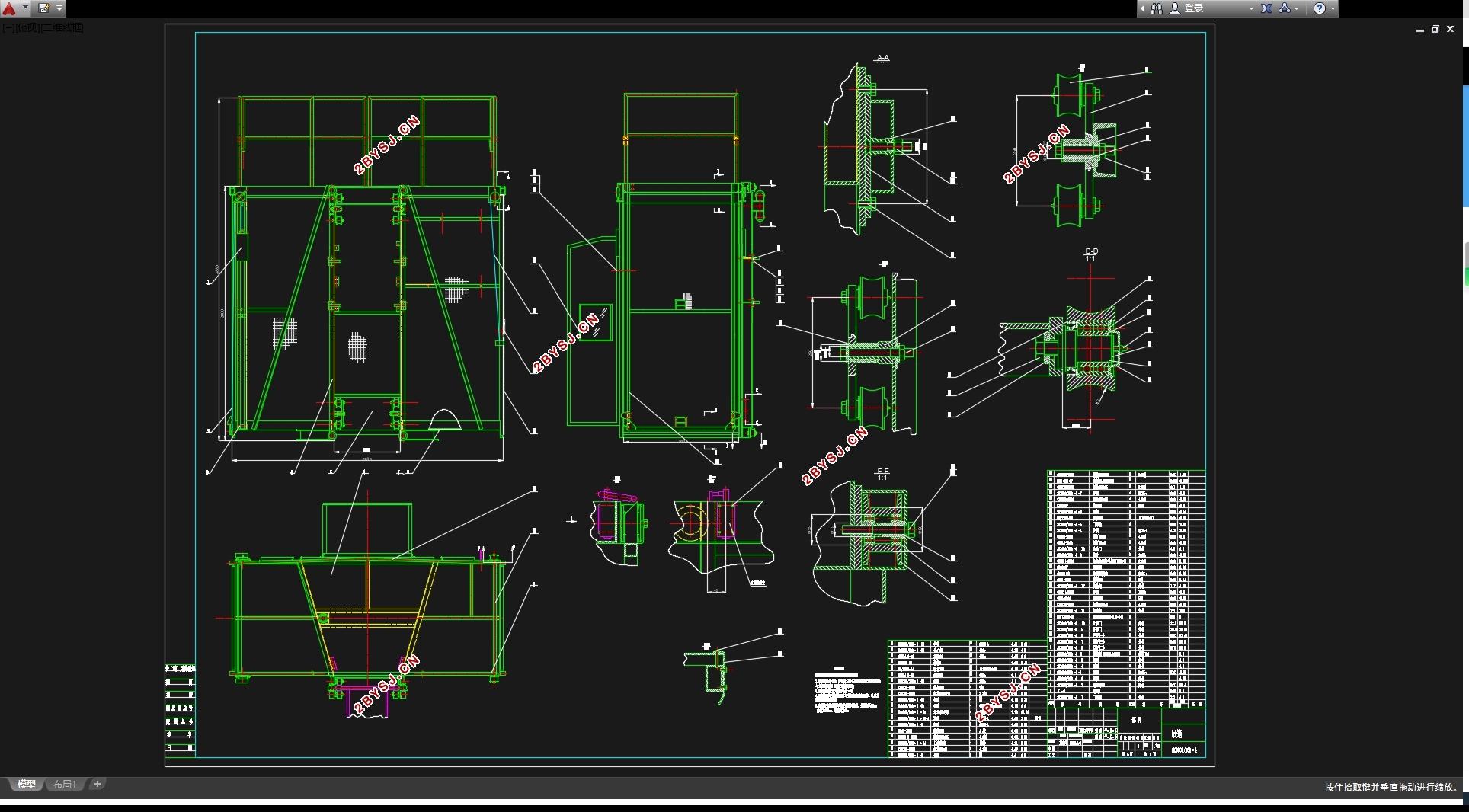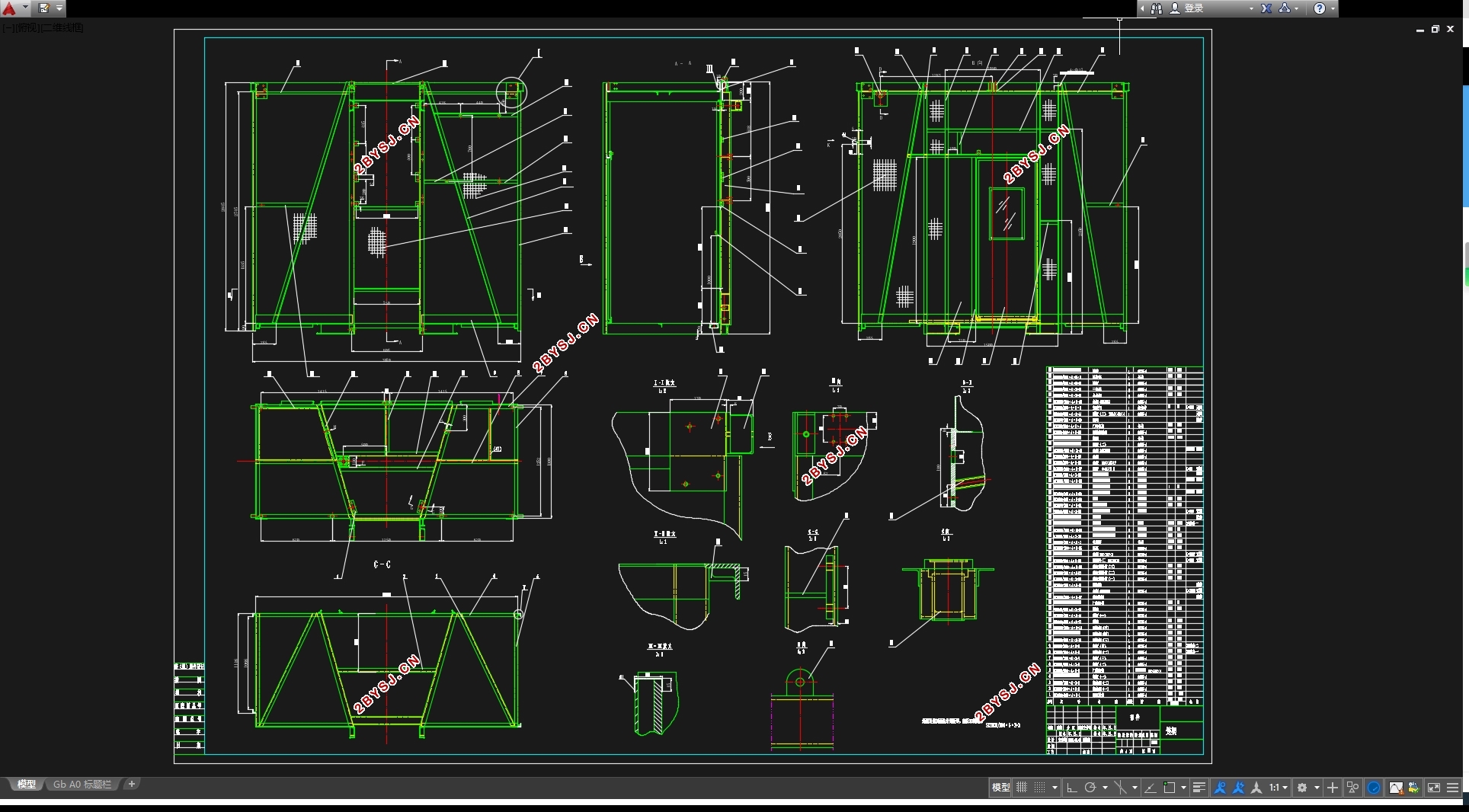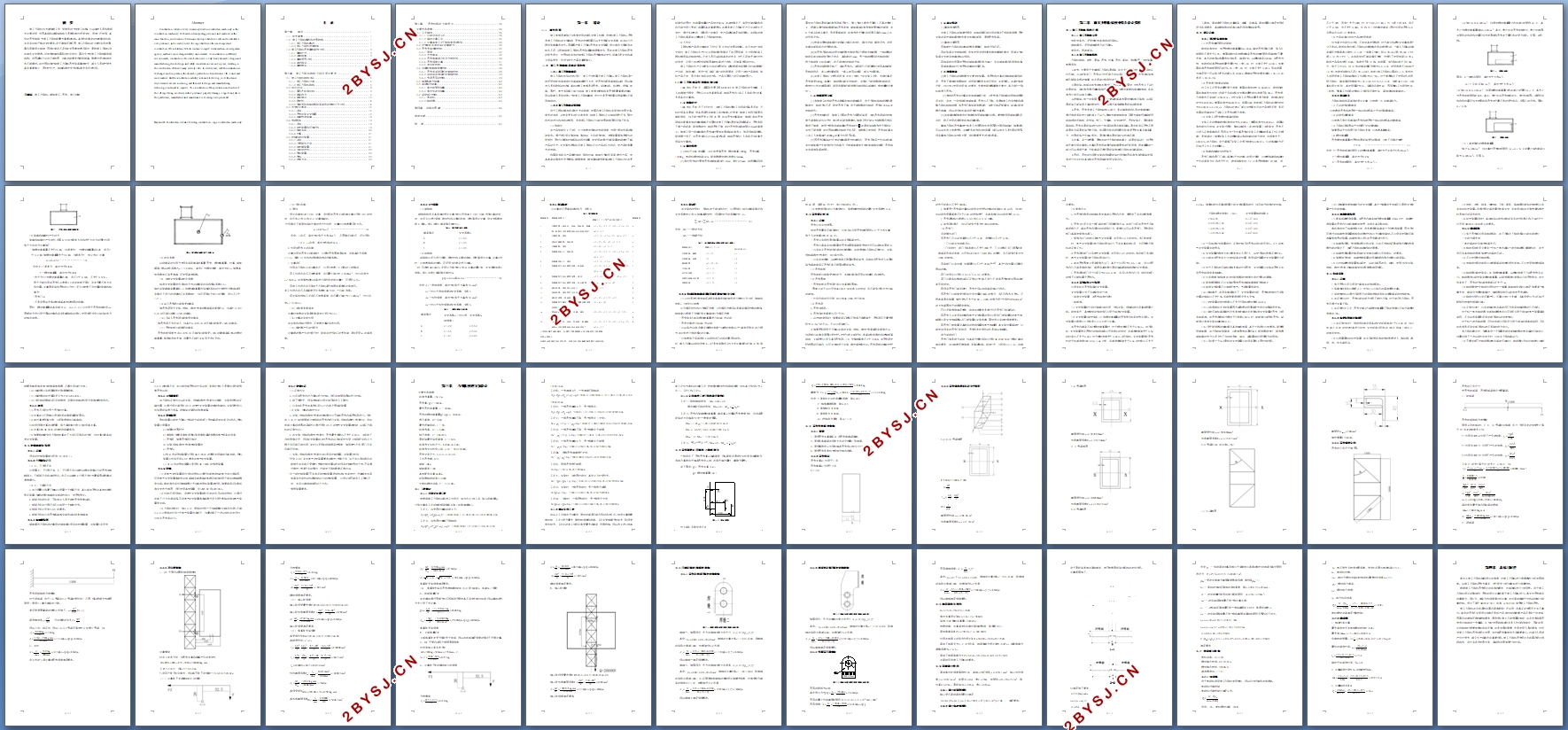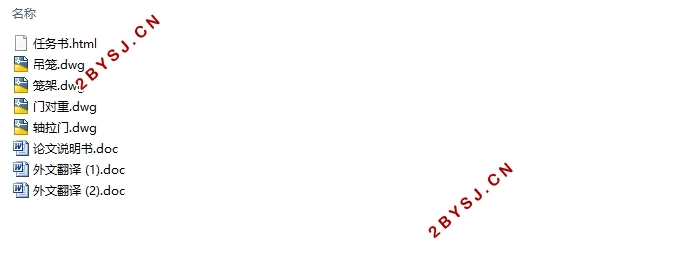施工升降机吊笼设计(含CAD图)
无需注册登录,支付后按照提示操作即可获取该资料.
施工升降机吊笼设计(含CAD图)(任务书,外文翻译,论文说明书17800字,CAD图4张)
摘 要
施工升降机作为建筑施工中,很常用的一种施工机械。它以输送人员和物料为主要功用,也因其独特的厢体结构人员乘坐相对舒适安全,而被广泛使用。其中的吊笼结构,为施工升降机中最为重要的机构。其中包含复杂的机电整合机构,并且有比较严格的安全要求。由于建筑环境不同,施工升降机的分类也有所差异。国内早期设计制造,因设计理念不足和安全因素考虑不到位,导致施工升降机存在诸多安全隐患。近年来随着和国际的交流合作,国内生产的施工升降机越来越成熟。但因建筑行业的不断发展,对其功能要求也越来越高。需要对设计制造技术不断精进。这对预防和控制施工升降机吊笼坠落事故发生,减少人员财产损失具有重要意义,同时对生产、制造和维护中节约成本也有促进作用。
关键词:施工升降机、建筑施工、吊笼、施工机械
Abstract
Construction elevator is very commonly used in construction machinery in the construction machinery. It is based on transporting personnel and materials as the main function, also because of its unique envelope structure is safe and comfortable ride personnel, and is widely used. The cage structure is the most important construction lifts institutions. Which contains complex electromechanical integration agency, and have more stringent safety requirements. As construction in different environments, construction lifts classification also is vary. Early domestic design and manufacturing, due to design and safety considerations are not in place, resulting in the construction lifts have many security risks. In recent years, with the international exchanges and cooperation, the domestic production of construction lifts is more and more mature. But the construction industry continues to develop, so its functional requirements are also increasing, and the need to design and manufacturing technology continued to improve. This construction of the prevention and control of the lift cage falling accidents, reduce personnel property damage is significant, while the production, manufacture and maintenance cost savings also promoted.
Keyword:Construction elevator、building construction、cage、construction machinery




目 录
第一章 绪论 1
1.1 研究背景 1
1.2 施工升降机概述和发展趋势 1
1.2.1施工升降机概述 1
1.2.2施工升降机发展趋势 1
1.3施工升降机吊笼事故案例分析 2
1.3.1事故经过 2
1.3.2调查结果 2
1.3.3事故原因分析 3
1.3.4鉴定结论 4
1.3.5事故教训 4
第二章 施工升降机结构介绍及设计要求 5
2.1施工升降机结构介绍 5
2.1.1施工升降机分类 5
2.1.2施工升降机结构 5
2.2 设计总则 6
2.2.1国内外标准比较 6
2.2.2载荷和力 7
2.2.4载荷情况 13
2.2.5稳定性 14
2.2.6传动系统和制动系统零部件的疲劳应力分析 14
2.3吊笼设计要求 15
2.3.1总则 15
2.3.2吊笼防坠安全装置 17
2.3.3超载检测装置 19
2.4传动系统 19
2.4.1总则 19
2.4.2防护装置和可接近性 19
2.4.3制动系统 20
2.4.4对重 21
2.5控制和限位装置 21
2.5.1总则 21
2.5.2行程限位开关 21
2.5.3防松绳装置 21
2.5.4安装用附件 22
2.5.5停机装置 22
2.5.6停机 22
2.5.7控制方式 23
第三章 吊笼机构的方案设计 24
主要技术参数: 24
3.1 工况确定 24
3.1.1 可能存在的工况 24
3.1.2 确定计算工况 25
3.1.3 计算典型工况下结构承受的弯矩 26
3.2吊笼滚轮在导轨架上的摩擦力 26
3.3 吊笼笼架强度校核 27
3.3.1 假设 27
3.3.2 吊笼载荷 27
3.3.3 吊笼承载梁几何及力学特性 28
3.3.4 吊笼强度计算 31
3.3.5 导向轮校核 34
3.4关键连接焊缝强度校核 38
3.4.1 吊笼连驱动耳板处焊缝校核 38
3.4.2 驱动架连接耳板处焊缝校核 39
3.4.3 笼顶吊耳的校核 39
3.5地基承载力验算 40
3.6基础承台验算 40
3.6.1 承台底面积验算 40
3.6.2 承台抗冲切验算 40
3.7 驱动部分校核 42
3.7.1 电动机 42
3.7.2 制动器 43
第四章 总结与展望 44
参考文献 45
致 谢 47
